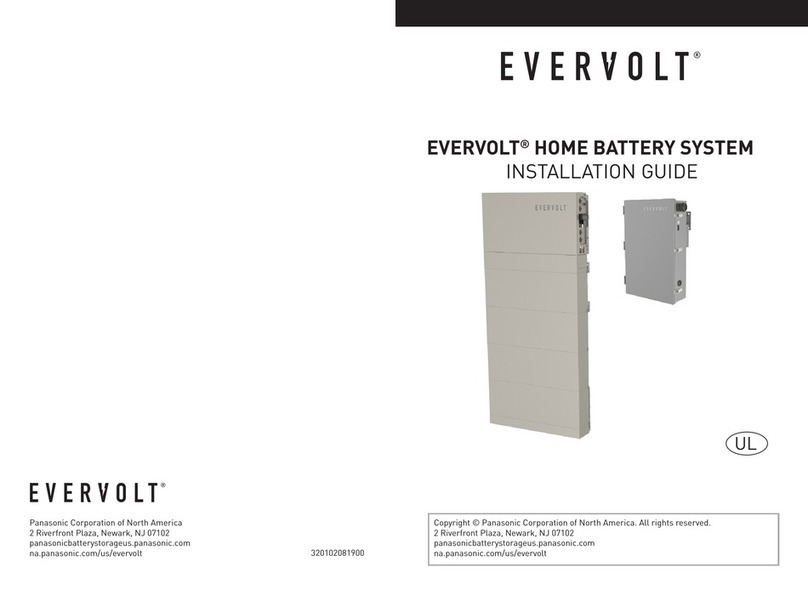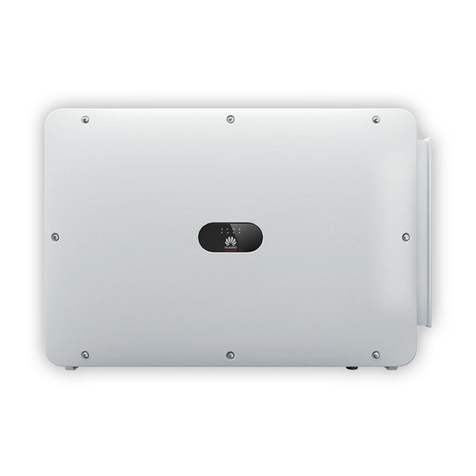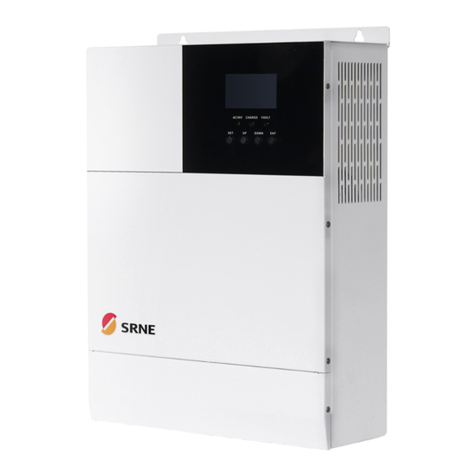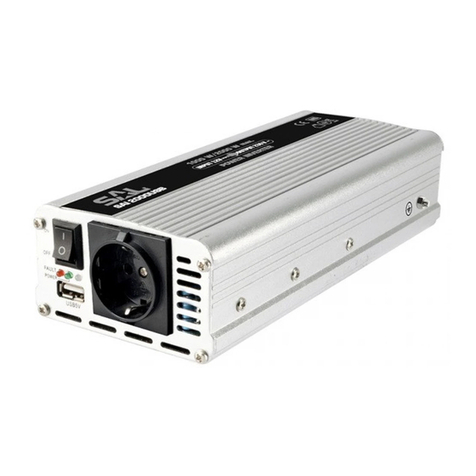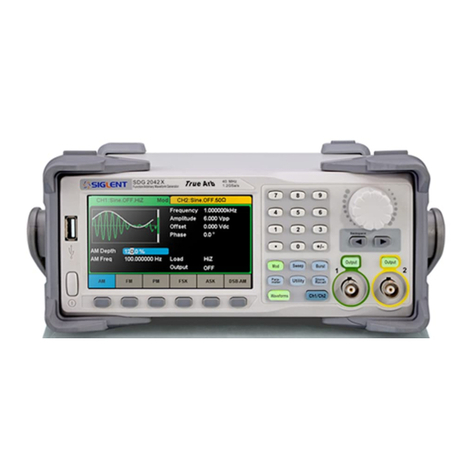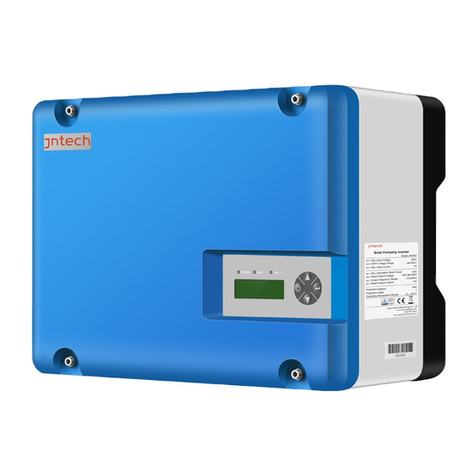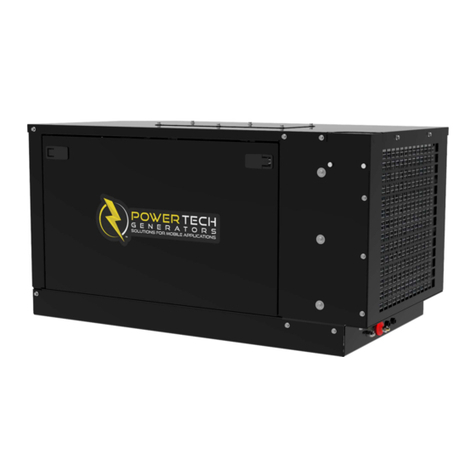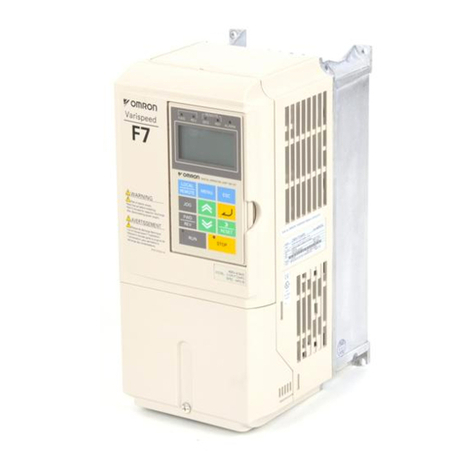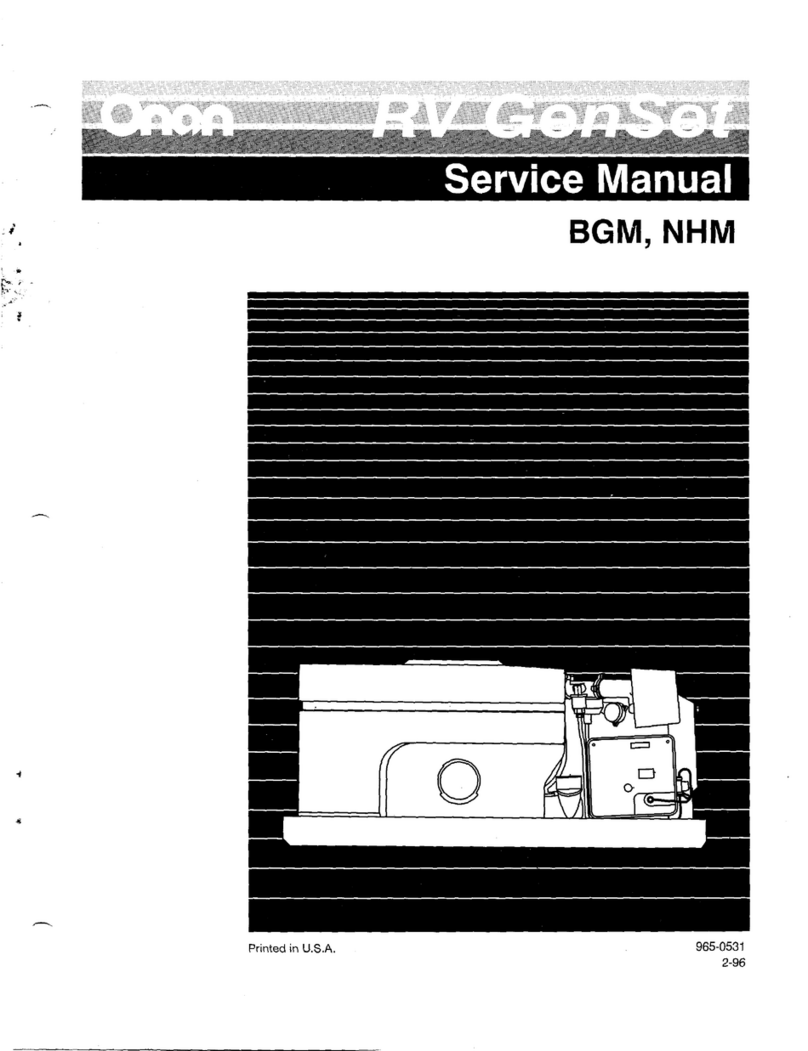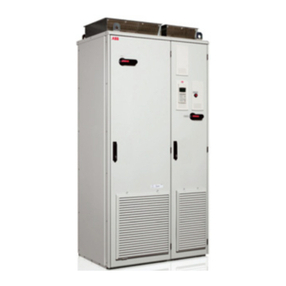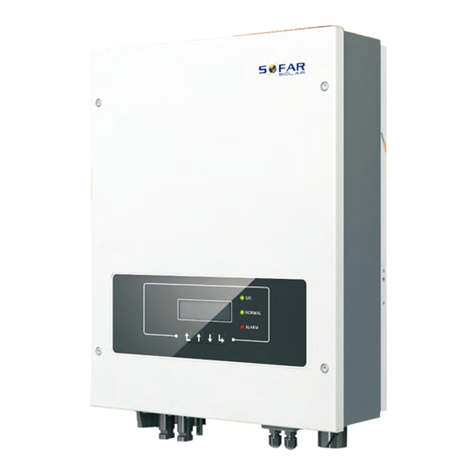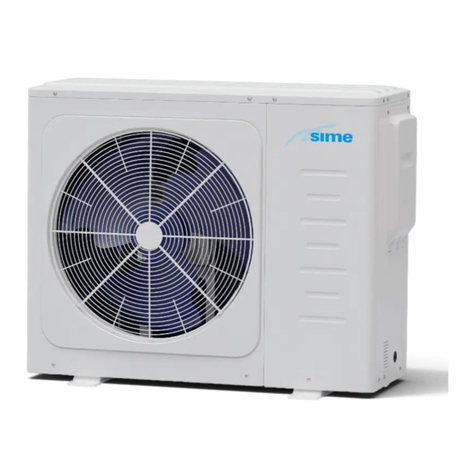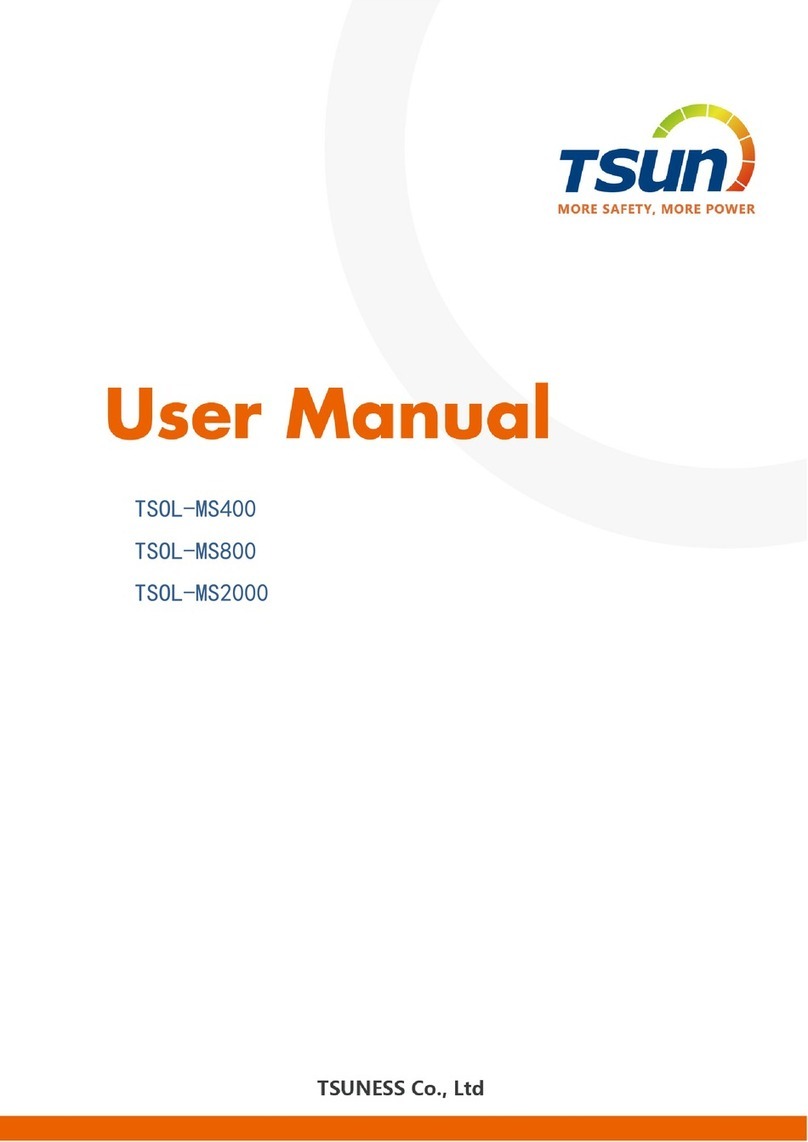Pragma TREKHY User manual

1v2021-02-1.09EN
USER MANUAL
TREKHY / PRAGMA H-01
FUEL CELL ELECTRIC GENERATOR

2v2021-02-1.09EN
Summary
Original Trekhy / Pragma H-01 instructions .............................3
Contents of the box...................................................................4
Apparatus function....................................................................4
Technical data........................................................................... 4
Safety instructions.....................................................................5
STARTING PROCEDURE........................................................7
Step 1 - Connections.............................................................7
Step 2 - Preparation of the hydrogen reaction....................... 8
Step 3 - Getting started ....................................................... 10
Step 4 - Operation............................................................... 11
Step 5 - System shutdown................................................... 13
Step 6 - Draining the reactor ............................................... 14
Care and maintenance............................................................ 15
Problems shooting / solving.................................................... 15
Disposal.................................................................................. 17

3v2021-02-1.09EN
Original Trekhy / Pragma H-01 instructions
01
Electric generator
02
USB plug 5V x2
03
Cigarette lighter sockets 12V x2
04
Air inlet / outlet
05
Grip handle
06
Reactor fan female socket
07
Hydrogen female connector
08
LED indicators
09
Green LED indicator
10
Red LED indicator
11
Hydrogen reactor
12
Reactor cap
13
Reactor fan male plug
14
Hydrogen male connector
15
Reactor fan
16
Reactor holder
17
Reactant bag (white color)
18
Water measuring glass
19
Purge port
19

Read the instructions carefully before use and keep them in
safe place for future reference.
Contents of the box
•Fuel cell electric generator
•Hydrogen production reactor
•Connection pipe between the reactor and the generator
•Water measuring glass
•USB charging cable
•Quick Start Guide
Apparatus function
This apparatus is intended for the power supply of small electronic equipment or
for recharging batteries through USB 5V or 12V "cigarette lighter" sockets. This
product is designed for indoor or outdoor use within the limits of its specifications.
Technical data
Dimensions
7.5x10.4x10.5 inches (W.D.H)
190x264x267mm (W.D.H)
Weight
8.16 Lbs /3.7kg
USB power sockets x2
USB-A 5V – 2,4 Amp
Cigarette lighter sockets x2
ISO4165 12V – 2,5 Amp
Operating temperature range
+32°F...+113°F / 0°C...+45°C
Guaranteed continuous electric power*
30 Watts
Peak electrical power
60 Watts during 1 seconds
Operating time of one bag*
1 hour
Reactor water volume
7.77 oz /230mL
Reactor initial water temperature
+34°F...+113°F / +1°C...+45°C
* In operation, the available electrical power may vary between 30W and 45W.

5v2021-02-1.09EN
Safety instructions
Before using this device, please read this user manual carefully and keep it for
future use.
If you pass this device on to someone else, also pass this manual to them.
•Use this device as described in this manual. Any mishandling and any con-
trary use to these instructions will in no way engage the responsibility of the
manufacturer.
•There is a risk of injury from improper use.
•Failure to follow the safety and operating instructions may cause electric
shock, fire and / or injury to persons.
•Use only parts / spares recommended by the manufacturer; other parts /
spares can damage the device and / or cause injury.
•This device may be used by children 12 years of age or older, provided they
are supervised or have been instructed in the safe use of the device and that
they understand the dangers involved. Cleaning and maintenance shall not
be made by children unless they are over 12 years of age and under adult
supervision.
•This device may be used by persons with reduced/challenged physical, sen-
sory or mental capacities or whose experience or knowledge is insufficient,
provided that they are supervised or have received instructions on how to use
the device safely and understand the potential dangers.
•Children should not use the device as a toy.
•Keep the device and its accessories out of the reach of children under 12
years old.
•Install the device in a stable place / space.
•This device may cause water to splash or spill. Use this device on a water-
resistant surface.
•Install this device in an upright position. Do not use the device if its orientation
exceeds an angle of 10 degrees from the vertical position.
•Chemical reaction with the reactant bag produces hydrogen, which is a flam-
mable gas. All handling of reactant bag and system should be performed
away from potential sources of ignition and with all necessary precautions.
Do not install the device near sources of naked flames, such as lighted can-
dles.
•Do not install the device:
oNear radiant heat devices (e.g. electric heaters)
oNear or on other equipment that produces a lot of heat
oIn places subject to constant vibrations

6v2021-02-1.09EN
oIn places subject to bad weather that could allow foreign bodies (dust,
sand, water, etc.) to enter through the vents and openings of the device
oDirectly on soft ground (sand, snow) which could block the ventilation of
the device.
•The device is designed to withstand water projections directed downwards,
up to an angle of 45 degrees from vertical. Do not expose the device to an
immediate environment exceeding these conditions of use.
•Do not immerse the device in water or any other liquid.
•Keep a minimum distance of 4 inches around the device for sufficient ventila-
tion.
•Before use, check that the device and its accessories (in particular cables and
connecting elements) are not damaged. In the case of damage, do not use
the device and contact your dealer for any inspection or repair.
•Never intentionally open a reactant bag. The internal powder reacts in the
presence of water and the direct contact of the powder with water produces
significant heat. In the case of a torn and unused reactant bag, set it aside in
a dry, heat-resistant place. Never use a torn reactant bag with the device.
Avoid powder ingestion and direct unprotected contact.
•Donot disassemble the device yourself. All disassembly, repair and verifica-
tion must be carried out exclusively by a trained / qualified person. Always
check before use whether the tank is filled to appropriate level with water.
•If the device is used with an inadequate water level, it may damage the device
and render it unusable.
•The reaction to produce hydrogen also produces heat. The heating of the
reactor is normal. The peak of heat is produced during the first 60 minutes of
the reaction. Do not open the reactor within 60 minutes of starting the produc-
tion hydrogen reaction. Wait for the reactor to cool before opening it.
•During use, some parts of the device may be hot. Do not touch the top of the
hydrogen reactor.
•The water in the reactor may be hot after use. Take the necessary precau-
tions when draining the reactor to avoid physical contact with hot water.
•The surfaces of the hydrogen reactor may be subjected to residual heat after
use, until the device has completely cooled.
•Do not clean the device with cleaners, metal sponges or other abrasive ma-
terials.
•Donot clean the device with products containing solvents.
•This device is designed to be used exclusively with the white reactant bags
intended for its use. The reactant bags are for single use.
•Keep these instructions.

7v2021-02-1.09EN
STARTING PROCEDURE
Step 1 - Connections
1. Remove the white and blue plugs which respec-
tively protect the generator hydrogen supply
socket (7) and the reactor fan power supply
socket (6).
- Pull on the white cap to extract it.
- Unscrew the blue cap turning counterclock-
wise
2. Connect the hydrogen supply pipe (14) to the
fitting in the center of the reactor cover (12). The
hose is connected by pushing it into its fitting
until it stops. To disconnect, push the ring of the
fitting back while pulling gently on the pipe.
3. Connect the hydrogen supply pipe (14) to the
female connector of the generator (7). The con-
nection is of the "bayonet" type socket. It is in-
serted vertically then locks by turning clockwise
until it stops.
4. Connect the reactor fan power cable (13) to the
generator socket (6). The socket is fitted with a
positioning pin. Do not force the socket. This
should fit easily into its counterpart when the pin
is correctly aligned.

8v2021-02-1.09EN
Step 2 - Preparation of the hydrogen
reaction
1. Unscrew the reactor cap (12) by turning it coun-
terclockwise.
Note: make sure that all connections
(electrical and gas) between the genera-
tor and the reactor cap are done before the fill-
ing procedure.
2. Fill the measuring cup (18) with water up to the
upper mark. Pour the water into the reactor (11)
Note: the recommended amount of wa-
ter is 7.77 oz. The measuring cup is cal-
ibrated for this exact volume. The volume of
water in the reactor must be between the two
lower and upper visible marks on the internal
face of the reactor. In no circumstances should
the volume of water exceed the upper mark,
which would cause water flowing into the fuel
cell.
Note: it is recommended that the initial water temperature is not higher
than 95°F (35°C) to avoid a too rapid chemical reaction, favoring water
splashes.
3. Open the vacuum foil packaging of the reactant
bag (17), without using any sharp object (ie. scis-
sors). The vacuum wrap is designed to be hand
torn at the side notch.
Note: In the event a reactant bag is damaged or torn opened when
opening its vacuum-packed packaging, do not use it. Set aside in a
dry place, avoiding contact with water. Using a damaged reactant bag
could cause an uncontrolled hydrogen production reaction with high heat
production.
4. Insert vertically the reactant bag into the reactor
(11). The hydrogen production starts at contact

9v2021-02-1.09EN
with water.The start-up time depends on the water
temperature. The higher is the water temperature,
the faster the reaction starts. Upon water
temperature, typical start-up times are:
- at 34°F (1°C), 90 seconds
- at 41°F (5°C), 60 seconds
- at 68°F (20°C), 23 seconds
- at 95°F (35°C), 8 seconds
- at 113°F (45°C), 7 seconds
5. Close the reactor cap (12) by rotating it clock-
wise until it stops (fingers tied). Close the reactor
cap immediately after putting the reactant bag, be-
fore the reaction starts, to avoid water splashes.
Note: it is preferable to close the reactor
quickly after putting the water and the bag in-
side. During the first seconds of the reaction
between the water and the bag, the bag inflates
accompanied by significant venting. This phe-
nomenon is normal. This can cause water to
splash outside the reactor if it is not closed by
its cap. Therefore, it is recommended to have
the necessary equipment available to wipe up
any water spills. A spill or projection of water
from the system is not dangerous and does
not interfere with the normal operation of the
product.
Note: in rare cases, a bag may inflate more suddenly than normal on con-
tact with water, promoting initial overflow of water from the reactor. This
does not disturb the operation of the product, and it is then recommended
to quickly close the reactor with its cap.
Note: the reactor cap is fitted with an internal valve which allows the pres-
sure in the system to be limited by discharging the hydrogen produced in
excess. This hydrogen is evacuated through the circular slit visible on the
cap. It is possible that water will also spill through this slit. This is normal
and does not interfere with the proper functioning of the product. The
valve, when opening suddenly, may make a clicking noise. This phenome-
non is normal.

10 v2021-02-1.09EN
Step 3 - Getting started
1. The red and green LED indicators light up sim-
ultaneously for 2 seconds to indicate proper oper-
ation.
2. The green LED indicator (9) flashes: the system
is starting up, the USB (2) and cigarette lighter (3)
electrical outlets are not yet active.
3. After a period of approximately 60 seconds, the
green LED indicator will remain continuously on:
the electric generator is operational and the USB
and cigarette lighter sockets are active and can be
used.
Note: The electric generator starts automati-
cally the moment hydrogen begins to feed the
internal fuel cell.
Note: the duration of the start-up phase is ap-
proximately 60 seconds. This period may vary
depending on parameters such as the outside
temperature, the quality of the water, the
length of storage of the equipment. It is normal
to observe a start-up phase that is slightly less
or greater than 60 seconds.

11 v2021-02-1.09EN
Step 4 - Operation
1. The electrical outlets (2) and (3) are located on
the front of the electric generator (1).
2. The USB sockets (2) are accessible by un-
screwing their plugs covers. They are USB-A type
and provide a maximum current of 2.4 amps at an
electrical voltage of 5 volts.
3. The cigarette lighter sockets (3) are accessible
by pulling on their plugscovers. They are ISO4165
type and provide a maximum current of 2.5 amps
at an electrical voltage of 12 volts.
Note: The product does not have an on / off
switch. Its operation is controlled by the pro-
duction of hydrogen in the reactor. Once the
hydrogen production reaction has started, it
cannot be stopped until all the reactant bag is
consumed.
4- In the event of electrical over-consumption
(electrical power demanded exceeding the pro-
duction of hydrogen in the reactor), the generator
cuts the USB or cigarette lighter electrical outputs
according to the power measured on the sockets
and the red LED indicator lights up continuously.
It is necessary to disconnect the equipment caus-
ing over-consumption in order for the generator to
continue to operate.
Note: Reactant bags are designed to produce consistence hydrogen for
one hour. At the start of the chemical reaction, the production of hydrogen
is high enough to reach an electrical power of 45W for a few minutes. The
reaction then stabilizes, corresponding to an available electric power of 30
Watts for 60 minutes. From approximately 60 minutes after the start of the
reaction, the hydrogen production will gradually decrease, and the availa-
ble electric power will become less than 30W. The electric power will de-
crease in proportion to the production of hydrogen. Hydrogen production
will stop completely after approximately 100 minutes.

12 v2021-02-1.09EN
Note: A purge sound is heard periodically. This is part of the normal oper-
ation of the device. Likewise, a little water could appear at the base of the
device, at the level of the purge orifice (19). This phenomenon is normal.
Note: the device must always be used in an upright position and
placed on a stable surface. Never use the device at an angle beyond
10 degrees from vertical.
Note: never close the air inlet and outlet vents (4), nor the fan vents
(15), nor the purge port (19) while the device is in operation. This
could cause the fuel cell and / or the hydrogen reactor to overheat, causing
the device to malfunction.
Note: the chemical reaction between the reactant bag and water pro-
duces heat and hydrogen. Do not open the hydrogen reactor cap
within the first 60 minutes of the hydrogen reaction to avoid any risk of
burns. During this time, the generator shall remain connected to the reac-
tor for temperature control.

13 v2021-02-1.09EN
Step 5 - System shutdown
1. At the end of the chemical reaction, the produc-
tion of hydrogen is no longer sufficient to maintain
the nominal electric power.
2. The red LED indicator lights up flashing to indi-
cate the end of the chemical reaction of the reac-
tant bag in the reactor.
3. The USB and cigarette lighter electrical outlets
are automatically deactivated by the electric
generator.
4.Once theelectricaloutletsare disconnected,the
reactor's fan and internal electric generator’s fans
may continue to operate to manage the system’s
temperature. This is part of the normal operation
of the device.
5. The generator can be restarted immediately by
replacing the used reactant bag with a new one.
Check water level and refill if necessary, without
exceeding the top mark.
Note: The volume of the reactant bags increases in the reactor during hy-
drogen production. This phenomenon is normal. It is possible that a reac-
tant bag will tear inside the reactor. This does not impact the operation of
the device. Once the reaction is completed, it is safe to handle the reactant
bag because the powder, when used, is inert. The reactant bag will then be
disposed normally.

14 v2021-02-1.09EN
Step 6 - Draining the reactor
1. Disconnect the electrical plug (13) and the hy-
drogen pipe (14) from the reactor.
2. Open the reactor cap (12) by turning it counter-
clockwise.
Note: the reactor seal is made up of two parts
(lower and upper) which must not be separated
under any circumstances. To open the cap,
grasp the entire cap to its full height. It must
be unscrewed a quarter of a turn without re-
quiring excessive strength.
Note: The reactor cap may be hot after
use. Act cautiously.
3. Drain the reactor: remove the reactant bag first
by grasping it by its upper end. Then drain the wa-
ter from the reactor. It is possible to remove the
reactor from its holder to facilitate the emptying op-
eration.
Note: the water and the reactant bag
contained in the reactor may be hot.
Take the necessary precautions when empty-
ing the reactor to avoid any risk of burns.
4. For better device protection / maintenance, put
back the protective covers over the sockets (6)
and (7). If the cover of the socket (7) is missing, it
is advised to leave the hydrogen supply pipe con-
nected even when the device is not in use, in order
to prevent particles from entering the gas circuit’s
supply to the fuel cell.

15 v2021-02-1.09EN
Care and maintenance
The device does not require special maintenance. Following the recommended
use and storage procedures in this manual is the most reliable method to ensure
the best longevity of your device.
Note: Do not use liquids containing solvents, soap or surfactants to clean
the reactor (11) and generator (1). Do not use hard or abrasive surfaces to
clean the device.
The reactor does not require specific cleaning during its entire service life. Rins-
ing the internal part of the reactor and the cap with clean water every two or three
cycles of use is sufficient.
During normal use, a deposit of white matter may gradually appear on the inter-
nal surface of the reactor. This is a normal phenomenon and it is not necessary
to remove this deposit to maintain the performance of the product. If you, how-
ever, wish to remove this deposit, use a non-abrasive plastic object (brush, spat-
ula, etc.) without pressing strongly on the internal surface in order to not damage
the protective coating of the internal face of the reactor.
If the reactor seal O-ring shows signs of contamination, remove it to clean it with
clean water, then replace it.
Note: do not use a compressed air device to clean the generator vents (4).
Doing so may damage the internal fuel cell.
Store the device away from humidity and dust, at a temperature between 32 °F
(0°C) and 113 °F (45°C). Store the device in the protective plastic bag in which
it was delivered, the bag must be closed. This will ensure the best longevity for
your device.
Problems shooting / solving
In the event of a device malfunction, contact your dealer for an inspection indi-
cating the serial number of the device. The serial number is located on the un-
derside of the electric generator.

16 v2021-02-1.09EN
TROUBLE SHOOTING
Problem Cause/action
LED indicator lights do not
light up
➔
Check that the reactor cap is correctly
closed.
➔Check that the hydrogen production reaction
has started (the reactor should be getting
hot).
Red LED indicator flashes ➔
End of hydrogen reaction production. The
hydrogen flow is insufficient. Replace the re-
actant bag.
➔Check the correct connection of the pipe
(14) between the reactor and the generator.
➔Reduce the power consumption by unplug-
ging one or more devices from the appa-
ratus.
➔Check that the reactor cap is correctly
closed.
Red LED indicator lights
up
➔
Short circuit or excessive power load on one
of the power outlets. Disconnect devices
plugged to the apparatus one by one until
the red LED indicator turns of.
➔Power over consumption. Unplug one or
more devices from the apparatus.
Green LED indicator light
flashes for excessive
length of time
➔
The duration of the start-up phase depends
on the conditions of use of the device, in
particular if it has been stored unused for an
extended period of time. In this case, the
start-up phase can take up to 3 minutes.
➔If the green light continues to flash beyond 3
minutes, check that the reaction hydrogen
production has started (the reactor must be-
come hot) and change the reactant bag or
the water if necessary.

17 v2021-02-1.09EN
Disposal
Used reactant bags can be disposed of with household cleaning products.
Electrical products should not be disposed of with household products. Accord-
ing to European Directive 2012/19 / EU for the disposal of electrical and elec-
tronic equipment and its implementation in national law, used electrical products
must be collected separately and disposed of in collection points provided for
this purpose.Contact your local authorities or your dealer for advice on recycling.
Product made in France by Pragma Industries
40 rue Chapelet 64200 Biarritz
www.pragma-industries.com
This manual suits for next models
1
Table of contents
